Knowing the detergent vs fabric softener can be helpful to have fresh and clean garments. Detergent cleans your clothes in the same way that shampoo cleans your hair. Detergent, like shampoo, eliminates all dirt and sweat from your clothes.
You’re left with a gritty fabric once your clothing has been cleaned. Your clothes, like your hair, require a conditioner to soften the fabric. This is why, after washing your garments, you should use a fabric softener.
The reason you shouldn’t only use a fabric softener is that, while your clothes may appear to be clean and smell fresh, they aren’t. Fabric softeners are designed to make garments feel clean and fresh, whereas detergent is designed to clean them by removing all dirt and sweat.
To get clean garments, use laundry detergent in every wash. A fabric softener should not be used in place of detergent. A fabric softener is devoid of the necessary cleaning chemicals and enzymes for removing dirt and stains from clothing.
Although certain alternatives to store-bought laundry detergent exist, such as borax and baking soda, laundry detergent is by far the most convenient.
The only decision you must make is which type of laundry detergent to use. Some detergents are designed for delicate clothing, while others are designed to remove difficult stains.
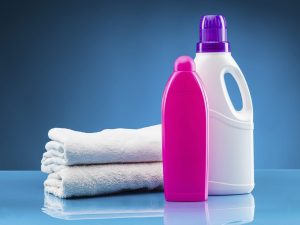
Because the fibers have been relaxed, the clothing glide side by side instead of grinding against each other. As a result, the fibers are not harmed, and your garments are not only softer but also last longer.
If you aren’t enamored with the thought of scents but nevertheless want your laundry to smell nice. Adding a dash of fragrance to your laundry is as simple as using a fabric softener. Your garments will have a lovely odor for several days.
Fabric softeners can also help your garments last longer by preventing them from fading. Because the fibers in the fabric are delicate, the colors will be protected for longer. This softness aids in the fibers’ ability to preserve their absorption levels as well as their color.
read more: Laundry Detergent Wholesale
Detergent and softener
Fabric softeners are a main part of the detergent category. The first thing to learn about a fabric conditioner is its composition. A fabric conditioner is a liquid that softens fabric while also reducing static cling. Liquid fabric conditioners are made up of a variety of substances, including lipids, silicone, ammonium, and chloride salts, among others. Fabric conditioners are usually scented to give laundry a long-lasting smell. Cotton softeners used to be created with a soap and oil mixture, but they’ve evolved from their basic beginnings and now have to deal with a variety of synthetic textiles.
A liquid fabric conditioner should be put on your garments during the rinse cycle when they are being washed. Fabric conditioner coats your clothes in a perfumed lubricant, making them slipperier and reducing friction. Fabric conditioner also splits fibers, making garments feel fluffier.
A fabric conditioner may be an overlooked component of your laundry routine. Due to the harsh effect that dyes, washers, and dryers had on cloth in the twentieth century, it was nearly a requirement.
However, your Fabric conditioner isn’t necessary for your clothes, especially if you use a tumble dryer or wash on a moderate cycle. A fabric conditioner is not required for some items, such as athletic wear, in order to preserve the clothing’s particular qualities.
Fabric conditioner is a personal choice, and some individuals enjoy the scent and softening effect it provides. It can help maintain the fluffiness of towels and sweaters after they have been air-dried.
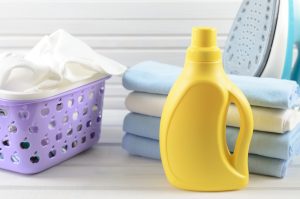
Detergent and fabric softener
In the laundry room, detergent and fabric softeners are both utilized. They each have a distinct purpose or role to play. Clothing, bedding, and washable curtains all benefit from a fabric softener. A detergent, on the other hand, cleans and eliminates odors and stains from washable fabrics.
Despite the fact that they are both utilized in the washing process, they are not interchangeable. It is not possible to clean garments with a softener. A detergent cannot be used to condition garments or other fabric goods unless it contains a fabric softener.
Only a washing detergent is required for the washing process. Fabric softeners are useful but not necessary. Without detergent filth, grime, and odors can’t be washed from any clothing. However, a softener isn’t always required. Softeners should be avoided for particular materials, according to some washing directions. The softener, also known as a fabric conditioner, protects the fibers by minimizing friction. Rather than scraping against one other, the conditioner’s smooth softness allows them to glide side by side. During a washing cycle, the less harsh contact there is, the less damage is done. Clothing lasts longer as a result.
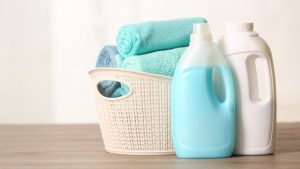
The addition of fragrance is another advantage of utilizing fabric softeners. Even while fragrance-free softeners are available, many of them infuse your laundry with the lovely scents of sea breezes, pine meadows, and wooded slopes. This scent can linger for days, even after the clothes has been returned to the closet. Your laundry and home will smell fresh, calming, and clean when you’re done.
A conditioning agent is a mixture of oils and lubricants that coats the item to be conditioner’s surface. Fabric in this situation. The material contains a positive charge that attracts the negative components found in the cloth strands. The positive conditioning substance binds to and neutralizes the negative fibers. The friction-induced electrical build-up is reduced as a result of this. This electrical activity is known as static when it comes to materials. There will be less static cling in your garments if less static is created throughout the washing cycle.
Detergent vs softener
There are a variety of reasons why we use fabric softener after washing the garments with detergent when it’s time to do the laundry. For starters, there’s the habit. But we also want our clothing and linens to smell good and feel good, as well as be wrinkle- and static-free when they come out of the dryer. Softener is as important to some as the detergent (several brands even market two-in-one formulas).
While adding fabric softener to your load is a good idea in general, there are a few things you should avoid. When it comes to athleisure, we suggest avoiding it entirely. The majority of training clothing is moisture-wicking, which means it transports perspiration quickly to the outer layer, allowing it to dry faster and prevent saturation. As a result, softening agents can clog the pores of the fabric, reducing its wicking ability—which isn’t ideal when you’re spending money on high-end leggings.
Fabric softener is also known to lessen the absorbency of towels, particularly those made of microfiber or terry cloth, and to wear down the effectiveness of water-resistant fabrics. It’s time to put your fabric softener away if your towels aren’t drying as well after a few cycles. Instead, add a cup of distilled white vinegar to the following load of laundry. It will not only remove the odors, but it will also make your once-plush towels feel brand new.
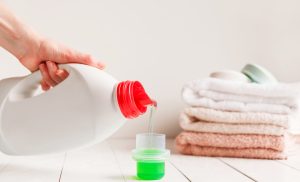
Detergent with fabric softener
There are a couple of laundry detergents than contain softener. April Fresh Scent Tide PODS Plus Downy 4 in 1 HE Turbo Laundry Detergent Soap Pods, 61 Count Tub – Packaging May Vary Clean, contain one of the most popular fabric softeners on the market in these versatile pods.
Some consumers are used to mixing detergent with softeners. It is good to know the efficacy of your fabric softener will be reduced if you mix laundry detergent with it. Because the laundry detergent and fabric softener are released into the laundry drum at different periods during the cycle, modern washing machines feature separate compartments for them.
Detergent with softener
The detergent ingredients are different from softeners. Originally, cotton softeners were made from a water emulsion of soap and olive, corn, or tallow oil. Some are more compatible with cellulose-based fibers (such as cotton), while others are more compatible with hydrophobic materials such as nylon, polyethylene terephthalate, polyacrylonitrile, and so on. Polydimethylsiloxane, for example, is a new silicone-based substance that lubricates the fibers. Derivatives having amine or amide functional groups are also used by manufacturers. These groups help the softener stick to fabrics better.

Softeners are typically found as an emulsion because they are hydrophobic. Manufacturers employed soaps as emulsifiers in early formulas. The emulsions are frequently milky and opaque. Microemulsions, on the other hand, have far smaller hydrophobic phase droplets. Microemulsions have the advantage of allowing tiny particles to permeate the fibers more easily. As an emulsifier, manufacturers frequently utilize a combination of cationic and non-ionic surfactants. A polymeric network, such as an emulsion polymer, is another option.
Detergent with cellulose
One of the chemicals in some detergents is cellulase, which, as you mentioned, reduces pilling on specific fibers and makes them look new with a fresh appearance. It also eliminates dust and mud. Regular detergent, on the other hand, is unlikely to produce holes in people’s cotton clothing.
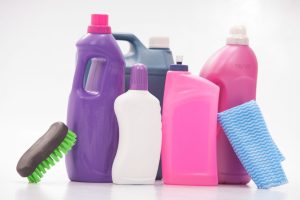
Cellulases are added to detergents to promote fabric smoothness and filth removal without causing damage to the fabric. They work by flowing through the interfibril gaps in textiles, preserving the fabric’s quality.
Cellulases are enzymes that break down cellulose chains. Fungi, bacteria, protozoans, plants, and animals all make them.

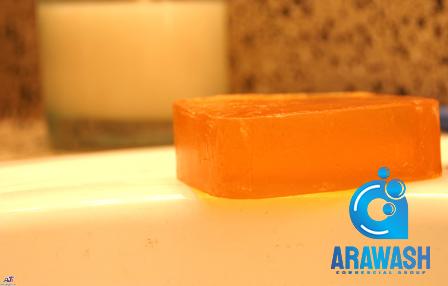

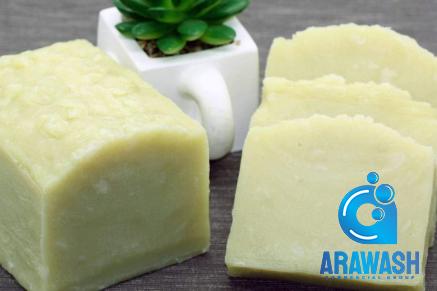
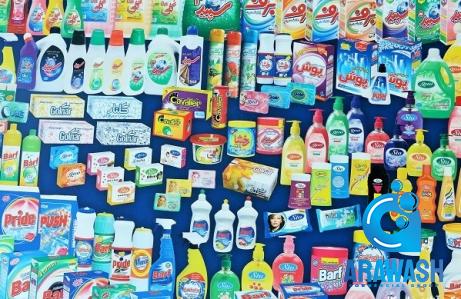

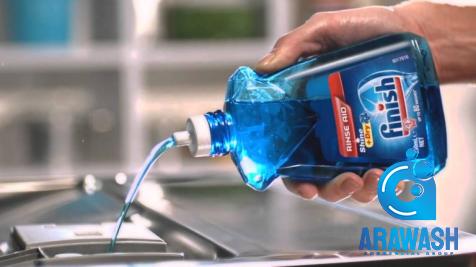
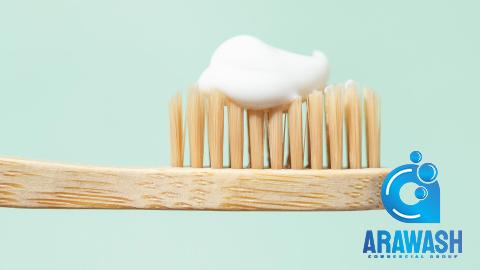

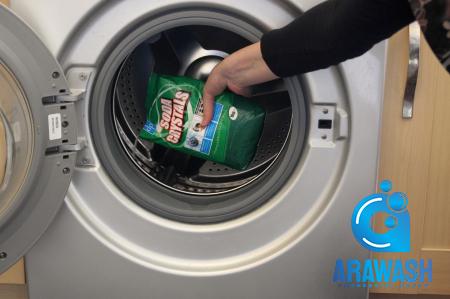
Your comment submitted.